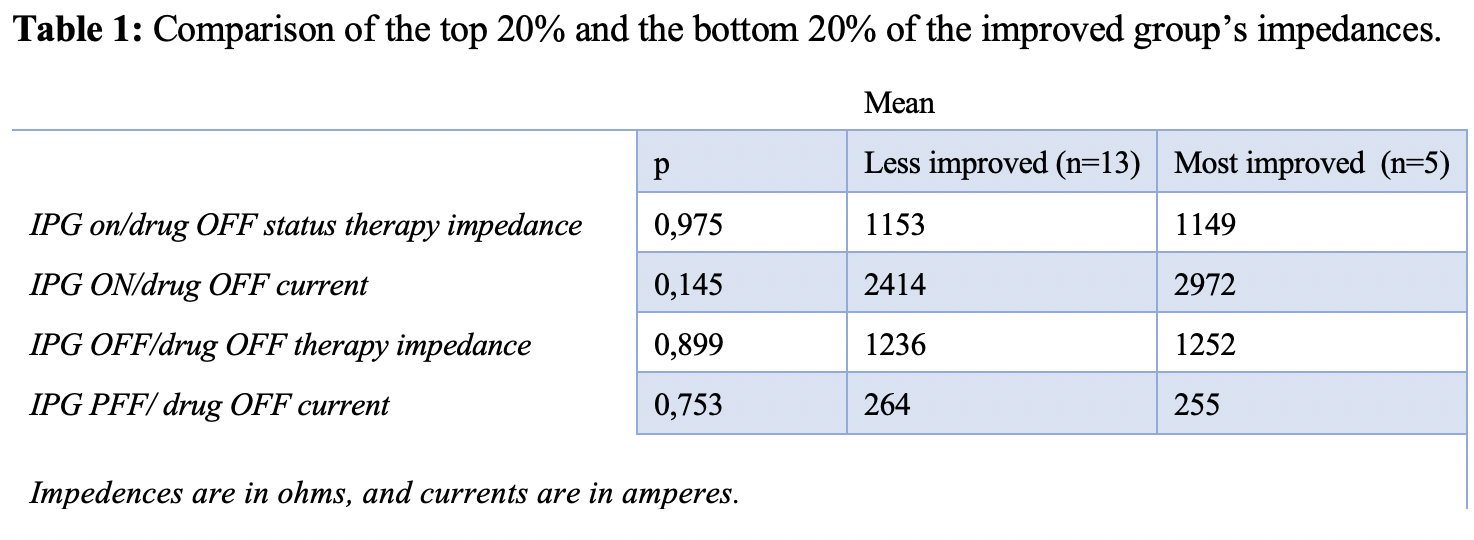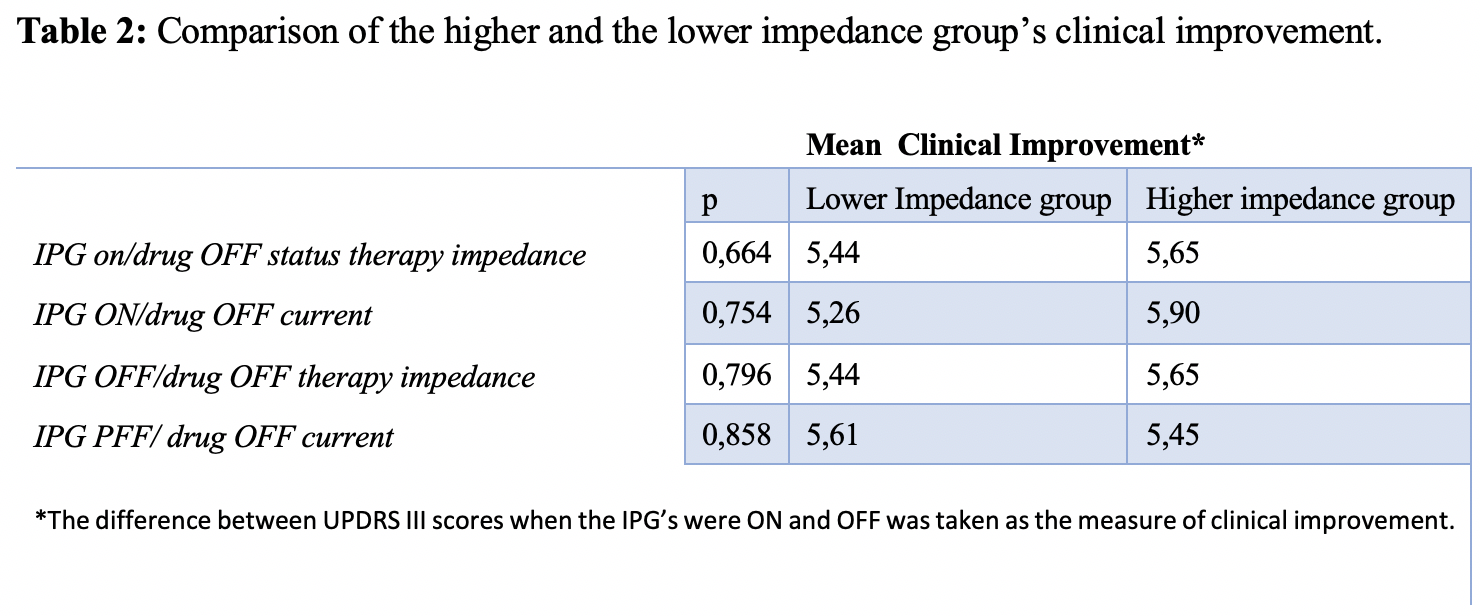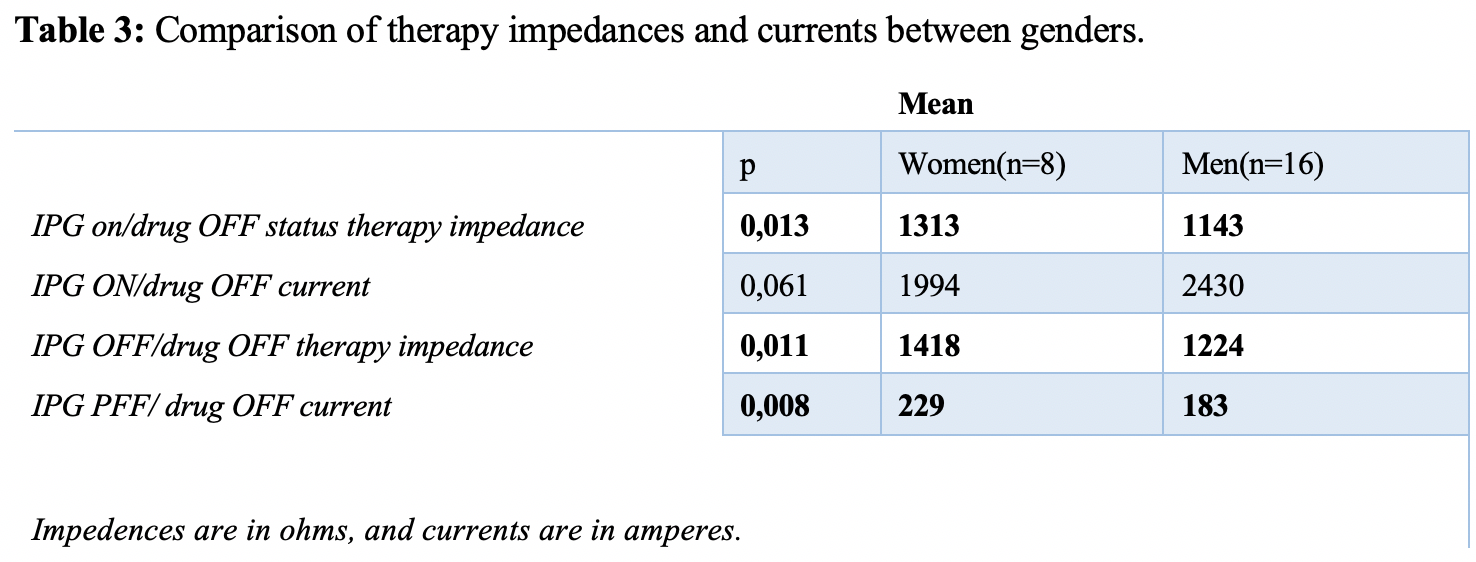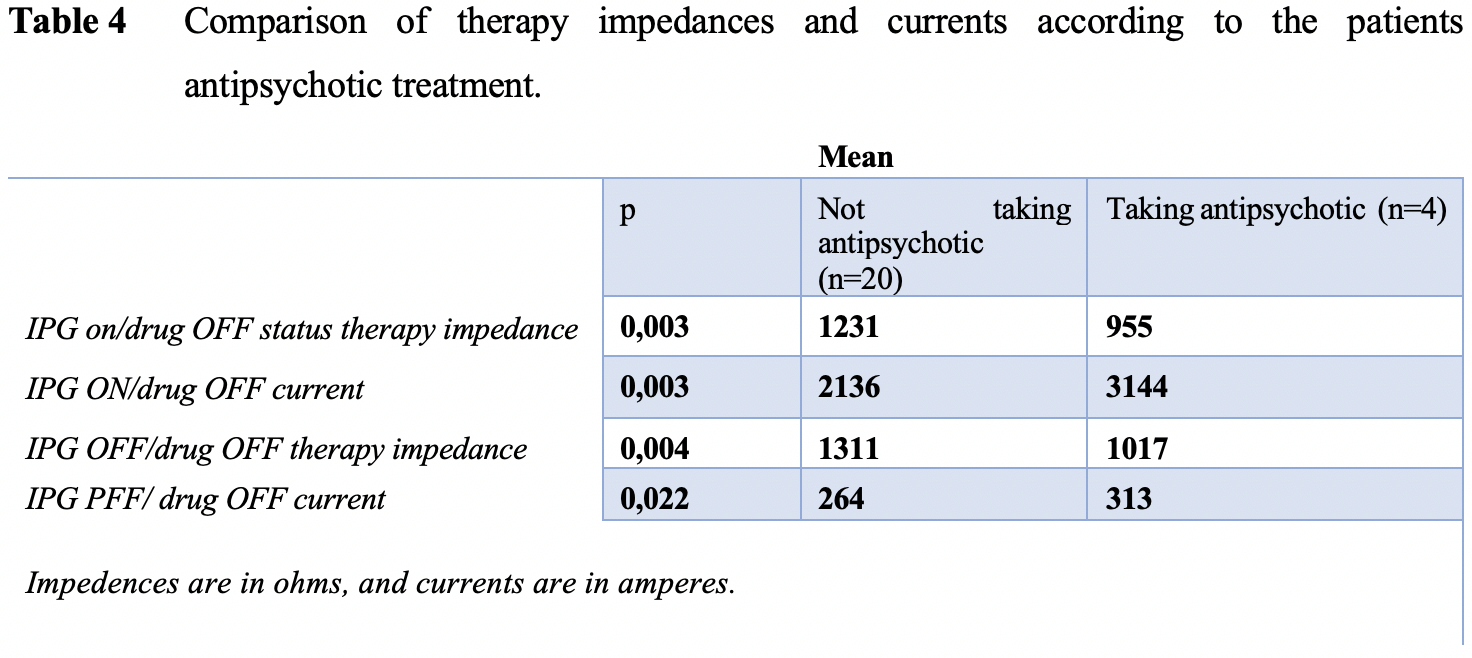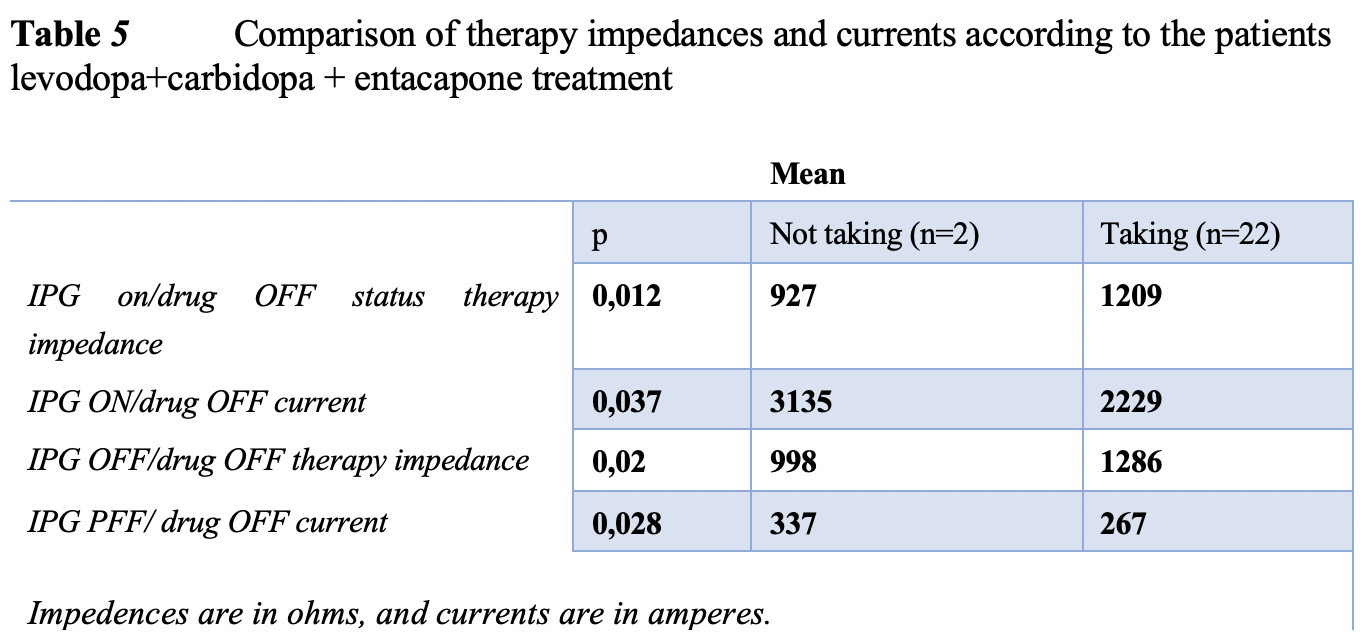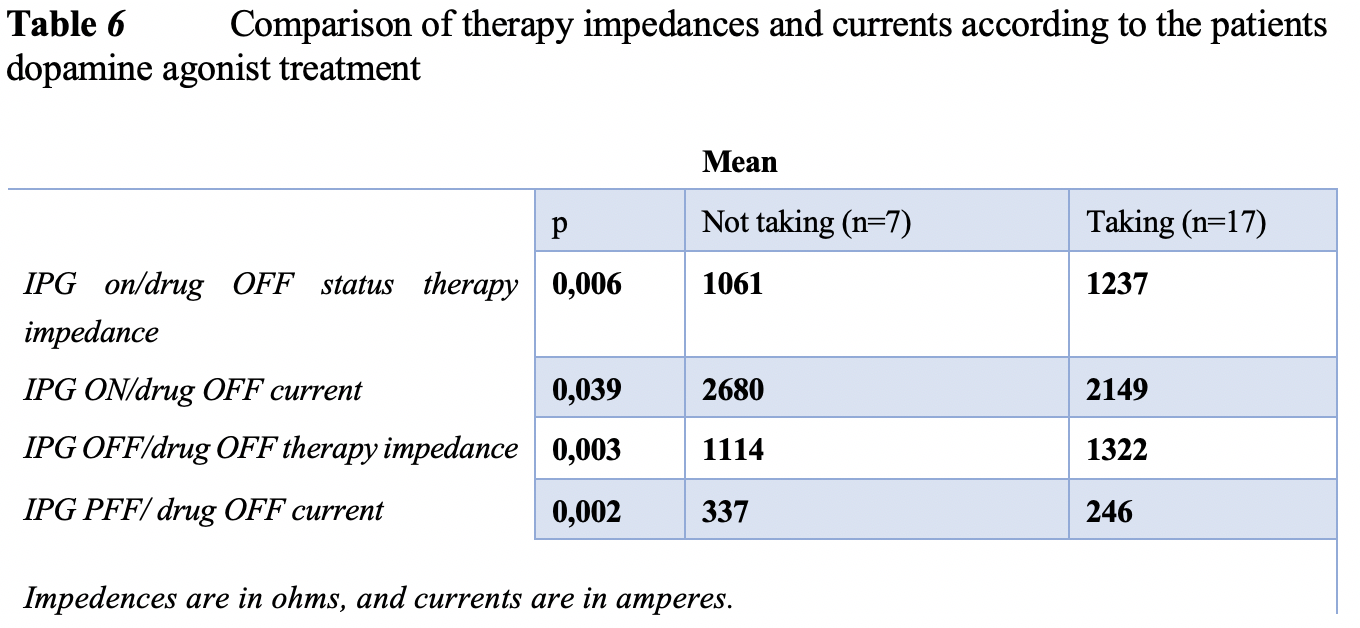Category: Surgical Therapy: Parkinson's Disease
Objective: We aim to test whether lower impedance values (within normal limits) are associated with better clinical outcome in Parkinson’s disease (PD) patients treated with subthalamic (STN) deep brain stimulation (DBS).
Background: Higher impedance (effective resistance to alternating current) values are associated with decreased volume of tissue stimulated. Impedance value is below 250 ohms and over 4000 ohms are unacceptable. However, few studies have been conducted on the clinical significance of the impedance values between 250 and 4000 ohms.
Method: 24 patients (females 33.3%, n 8) with PD consented to join, all with STN DBS, have a score of 26 or more on MMSE. Medical treatment and DBS configuration were not changed at least for three months.
Patients were evaluated after 12 hours of depletion of dopaminergic drugs when Implantable Pulse Generator (IPG)-ON, and later when IPG is OFF. They were rated by Unified Parkinson’s Disease Rating Scale (UPDRS) Part III (motor examination), and their stimulation parameters (including therapy and electrode impedances) were obtained. Difference between UPDRS III scores when the IPG’s were ON and OFF was taken as the measure of clinical improvement.
Results: There was no correlation between the clinical improvements of the patients and the electrode impedances. In other words, patients with high impedance did not show less improvement. There was no difference between the top 20% and the bottom 20% improvers’ impedances [Table1]. There was no difference between the higher (above the mean impedance) and the lower impedance group’s clinical improvement [Table2].
The therapy impedances (TI) of women (n=8) are higher than men (n=16) [Table3]. The patients that are on antipsychotics (n=4) have higher TI [Table4]. The patients that are on levodopa+carbidopa+entacapone (n=22) and the patients that are on dopamine agonists (n=17) have higher TI [Tables 5&6]. There were no differences in the duration of disease or the duration of DBS usage among patients who were or were not on mentioned medications.
Conclusion: Impedance variations within normal limits in PD treated with STN DBS don’t affect clinical outcomes. Interestingly, women have higher impedances. Some drugs may alter the impedances. Results should be interpreted with caution due to small number of patients.
References: 1-Allert, Niels, et al. “Electrode dysfunctions in patients with deep brain stimulation: a clinical retrospective study.” Acta neurochirurgica 153.12 (2011): 2343-2349.
To cite this abstract in AMA style:
A.Y Yilmaz, A. Savas, C. Akbostanci. Clinical Effect of Impedance Variations within Normal Limits in Parkinson’s Disease Treated with Subthalamic Deep Brain Stimulation [abstract]. Mov Disord. 2020; 35 (suppl 1). https://www.mdsabstracts.org/abstract/clinical-effect-of-impedance-variations-within-normal-limits-in-parkinsons-disease-treated-with-subthalamic-deep-brain-stimulation/. Accessed December 5, 2025.« Back to MDS Virtual Congress 2020
MDS Abstracts - https://www.mdsabstracts.org/abstract/clinical-effect-of-impedance-variations-within-normal-limits-in-parkinsons-disease-treated-with-subthalamic-deep-brain-stimulation/

